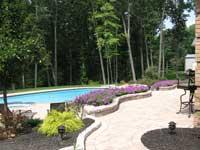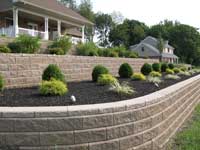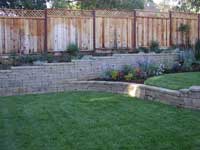Curvy Retaining Walls
Curved Retaining Walls in Your Landscape
Does your landscape need a retaining wall? Not sure how to tackle a slope or add a planter? Unsure of where to begin your design ideas? Then why not make your project as attractive and functional as possible, by building a retaining wall with curves. Curved retaining walls offer many benefits that just about every project can use, the process is simple.
Why Build with Curves?
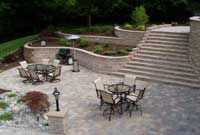
Curves offer a seamless strength that you simply don’t see with any other application
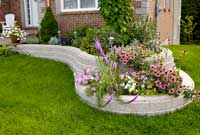
Flowing lines soften edges in ways corners never do
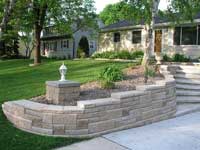
Curves soften entryways and stairways
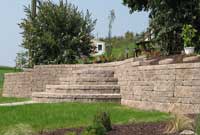
Most curved walls can be built with no cutting involved
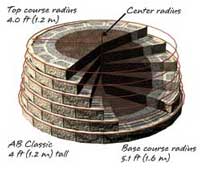
Find the minimum radius of your curves with the Radius Chart
So why build with curves you ask? A beautiful addition to almost any landscape, curves offer a seamless strength that you simply don’t see with any other retaining wall application. Why settle for straight and narrow when you can get curvy with your landscape. Flowing lines soften edges in ways corners never do.
Curves can benefit your landscape by adding curb appeal to your home. Use them when building raised patios and flowing gardens, or when creating water features. Curves soften entryways and stairways and are a great way to add dimension and spirit to long straight walls.
Another added benefit to using curves, is how easily they come together. In fact, most curved walls can be built with no cutting involved, making them simple to build.
With all the benefits a curved retaining wall can offer, you are sure to get the look and function you need for just about any project
Using Curves and Serpentines in Your Landscape
Now that you have decided to add curves to your landscape, there are just a few steps you need to follow to get your retaining wall project rolling. Let’s start by selecting the right curve style to compliment your landscape.
Picking Your Curve
When planning your project you must first decide whether you need inside or outside curves or a combination of both to make a serpentine retaining wall. Choose the curve option that best fits your landscape and overall style.
Inside Curves are achieved by creating consistent spacing between the backs of the retaining wall blocks as you build. A great option when trying to add more usable space.
Outside Curves are created by removing one or both of the wings on the back of the retaining wall block to create a smooth and flowing radius.
Serpentines are achieved by using a combination of both inside and outside curves to creating a beautiful flow to the landscape.
Designing Your Style
Before constructing your retaining wall, layout your design using a garden hose or paint. This will help you determine how tight or gentle each curve will need to be. Knowing this information ahead of time can help you make the best selection when ordering the blocks for your project. Choose retaining wall blocks that will fit your design or adjust your design to fit the blocks you have selected.
Before You Build
Whether you decide to build it yourself or hire an AB Certified Contractor to do the heavy lifting, determining your radius or curve before you build will help the build process go more smoothly. Curved retaining walls have a greater setback, so the radius at the bottom of the retaining wall will be different than the one at the top. You will need to determine the minimum radius for your base course before you begin to ensure the top of your retaining wall has the radius you desire see the radius chart for landscape retaining walls.
Excerpt from Landscape Newsletter Issue #24

